Installation instructions
Instructions as PDF for printing
To assemble the SPACCER you will need the following tools and aids

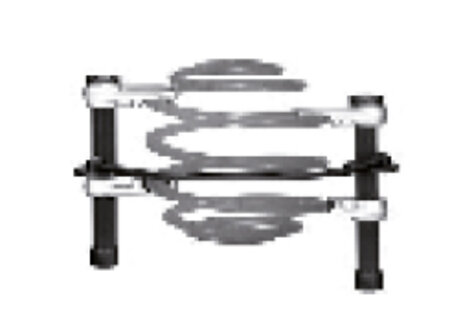
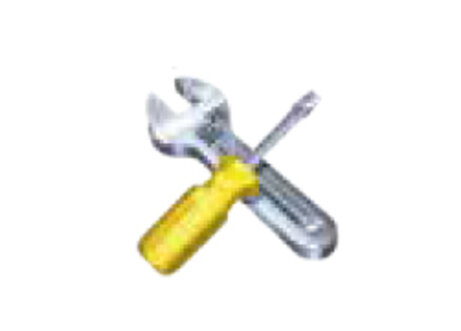
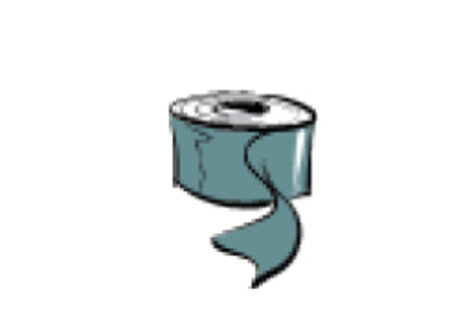


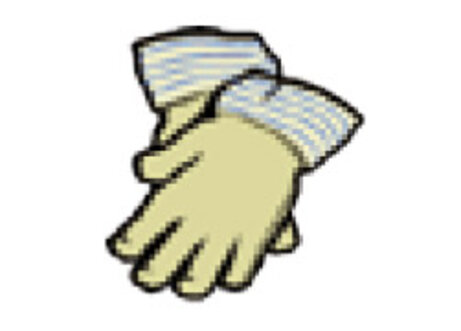
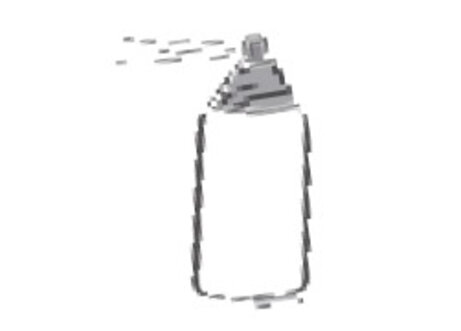

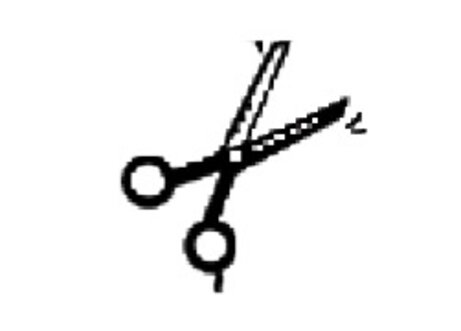
Symbol legend




I. Important product and usage information
We congratulate you on purchasing the SPACCER lift system. A SPACCER is a spiral ring made of high-strength special aluminum to raise your vehicle. With a SPACCER you can raise vehicles of all brands and models up to 48mm. A SPACCER raises one wheel of your car by 12mm. You can use the lift kit on the front axle, the rear axle or on the front and rear axle. Dimensions of the lift kit The TÜV specification for the lift kit results from the difference between the vehicle height stated in the vehicle registration document and the height measured at the top edge of the roof after the conversion. In order to achieve comparable measured values, the influences of the wheel/tire combination, shock absorber type and condition, tank filling and previous standing height tolerances must be taken into account. Because of these possible external influencing factors, there may be deviations in the actual level of elevation. Lift kit SPACCER produces many different parts for models from a wide range of manufacturers, some of which are very similar. The installation and use of such parts in vehicles that are not intended for this purpose can cause serious damage. Therefore, before installation, compare the TÜV test report with the vehicle registration document to see whether SPACCER has been tested for your vehicle and whether all designations are correct and whether the SPACCER is intended for your vehicle. This also applies to wheels and tire sizes not approved by the manufacturer. Please pay close attention to the information on vehicle type and design in our TÜV test report. If you are not sure whether the product offered to you is suitable for your vehicle type, please consult SPACCER or a qualified vehicle workshop (authorized dealer). SPACCER, which were specially manufactured according to the chassis number, are generally excluded from exchange or return.
II. Instructions for assembly
SPACCER are manufactured under constant quality control and strict care, but even high-quality products can become defective. To prevent product damage, please note the following instructions: Do not overload the vehicle nor exceed the axle loads specified by the manufacturer or TÜV. Avoid unusual and aggressive driving style with increased use of the vehicle. SPACCER are intended exclusively for operation in road-legal vehicles that comply with the applicable legal regulations . Any other purpose is strongly discouraged. Only have the installation carried out in authorized or specialist workshops. Only they have the appropriate specialist knowledge and tools. We assume no liability for non-compliance. 1. Before installation Please check the delivery for completeness Please compare the delivered items with the delivery note Please compare the contents of the delivery with the TÜV test report Also compare the TÜV test report with the vehicle documents Vehicles with hybrid and hydrogen - or electric drive may only be raised in specialist companies or specialist workshops. Please refer to the workshop manual. Please pay attention to the lifting points for lifting the vehicle on all vehicles, especially those with electric drives. Please refer to the workshop manual. Please check whether the appropriate tools are available for installation. You can find a list of the required tools here. If there are any discrepancies or discrepancies, please contact your seller. Please measure all dimensions important for the conversion, in particular the remaining spring travel (see Chapter IV). If your vehicle has a towing hitch, please make sure that the upper edge of the After raising the trailer hitch, it does not exceed the legally required height of 420mm (Figure 1) and does not fall below 350mm.

2. During installation
Work according to the vehicle manufacturer's specifications or workshop manual. Please note all instructions in the installation instructions. Please check all dismantled parts for functionality. Replace defective original parts with new original parts. Only use suitable tools for assembly/disassembly. Please do not additionally process any parts or make them suitable. except for the mounting aid rubber bead of the rubber on the suspension strut bearing (see Figure 2). If products do not fit, stop installing or removing them. Installing products in unsuitable vehicles can cause serious damage. In this case, please contact your dealer and describe the problem. Have the vehicle documents or technical documents ready so that you can answer any questions that may arise. Please make sure that after the conversion there are no more parts left than you replaced. The rubbers of the suspension strut bearings on the rear axle of some vehicles are equipped with an assembly aid. This is to ensure that the rubber of the suspension strut bearing does not slip off the spring during production. This does not function when the vehicle is in operation and can therefore be removed. If your vehicle has such a rubber bead as a mounting aid, you must remove it before installing the SPACCER (see Figure 2).

3. After elevation
Only use tightening and fastening values specified by the vehicle manufacturer. Measure all dimensions that are important for the lift. Check and correct the following if necessary: The correct fastenings of all loosened and mounted parts. The freedom of movement of the wheel/tire combination (loaded/unloaded). The braking system and the setting of the load-dependent brake force regulator The freedom of movement to all brake parts and brake hoses (at all steering angles) The adjustment of the headlights The freedom of movement to all axle and steering parts (at all steering angles) The adjustment of the level control Axle settings to original values Non-compliance with these testing and adjustment work can lead to the failure of vehicle systems and lead to serious damage.
4. Test drive
Installing SPACCER can improve the driving behavior of your vehicle. Rolling movements can be reduced thanks to the optimized residual spring travel. This makes your vehicle safer to drive at the limit. If you notice unusual driving behavior in your vehicle, this may be an indication that the installed SPACCER is not suitable for your vehicle or that errors were made during installation. If this is the case, please have your vehicle checked at a specialist workshop immediately. Failure to do so can lead to serious damage.
The installation and removal of SPACCER can lead to damage if not handled correctly and professionally. For this reason, SPACCER must be installed by a specialist automotive company (master craftsman, authorized dealer, etc.). The assembly should not be carried out by private individuals!
III. Important information for experts and test engineers (aaSmt / aaPmt)
The following information is used by TÜV, DEKRA, GTÜ or other European and international organizations to make registration as easy as possible for them:
- Testing basis
Check the lift kit according to VdTÜV leaflet 751/II.1, assessment of vehicle lift kit, appendix II. - Strength test
The strength and requirements for our lifting system can be found in our test report no. 02/0149-02, 03/0149-02, 04/0149-02, 13/0029-00 and 13/0111-00 on a strength test of spring bases as a basis for vehicle acceptance according to §21 or §19(2) StVZO. - Residual spring travel
Be sure to measure the remaining spring travel when stationary and in the extended state (see leaflet “Determination of residual spring travel”). This must still be at least 4 cm after conversion with the SPACCER system (guideline according to VdTÜV bulletin II.4.3). - Driving behavior
Since the characteristic curve of the spring is not changed, the driving behavior does not change either. The spring is simply underlaid with the SPACCER® so that the car is higher. The pressure of the spring and suspension remains unchanged despite the lift, as long as there is a remaining spring travel of at least 4cm. - Track setting
As a rule, the track setting is not changed because only the spring is underlaid with SPACCER®. The spring/shock absorber unit remains unchanged. It is still necessary to check the track after installation for safety reasons. - Light test
Please check the headlight setting after the lift. - Spring Travel
Pro SPACCER a spring travel limiter is installed in the piston rod, so the original spring travel is retained. - Assembly
Each delivery includes detailed assembly instructions in which each step for installing SPACCER® is described in detail. Shock absorbers and springs must be removed or installed according to the original manual.
IV. Residual spring travel
Why is there a remaining spring travel?
Every vehicle has a legally required minimum spring travel of 4cm ex works. In around 98% of all vehicles, this suspension travel is longer than the legal minimum requirement and can therefore be used to install a lift kit. The automobile manufacturer has therefore already technically provided for the possibility of a lift.
What is the remaining spring travel?
When the vehicle is compressed, the piston rod is in the damper. (Figure 3) When the vehicle is fully extended (Figure 4), you get the suspension travel F. The legal minimum requirement for this suspension travel is 4cm, but in most cases it is significantly longer and forms the basis for a lift. If a lift kit is installed and the vehicle is fully extended (Figure 5), the suspension travel F must still meet the legal minimum requirement of 4cm. In the compressed state (Figure 6) there is no difference in the damper and spring. Therefore, the characteristic curve of the spring and thus the suspension comfort remains the same. If you want to install SPACCER, you must ensure before installation that the spring travel between compression and rebound (residual spring travel) will be greater than 4cm even after the lift has been raised.




Determine remaining spring travel / maximum possible lift
The maximum height of a lift is limited by the remaining spring travel. For TÜV registration according to §21 or §19(2) StVZO, a residual spring travel of at least 4cm is required after raising the bike. Maintaining the remaining spring travel guarantees a problem-free lift. This means that brake hoses, drive shafts, axles and chassis remain within the tolerance range tested by TÜV (TÜV data sheet 751, appendix II).
To determine the remaining spring travel you need:




How to determine the remaining spring travel:
Mark the center of the wheel with the adhesive tape and measure vertically to the edge of the fender. While at rest, measure the distance between the marked center of the wheel and the center of the fender (Figure 7) and note the value. Raise the body using a jack or a lifting platform. The vehicle is now fully extended and the wheels are not in contact with the ground (Figure 8). Now measure the distance between the center of the wheel and the center of the fender again. Determine the total height of the SPACCER to be installed (12mm / SPACCER , 15mm / SPACCER with rubber profile) and calculate the remaining spring travel according to the formula: distance extended - distance compressed - height SPACCER
Residual spring travel dimensions
IMPORTANT! For a correct measurement result, please first measure the distance compressed and then the distance extended.
| Front axle | rear axle | |
|---|---|---|
| distance compressed | ||
| Distance feathered out | ||
| Minimum remaining spring travel | ||
| Max. lift | ||
If the minimum remaining spring travel is not maintained, the remaining spring travel can be increased using dome plate washers (Figure 9). Assemble this between the piston rod and the dome bearing as required. This means the remaining spring travel is extended for more driving comfort. If this spring travel is not enough, we offer an optional piston rod extension.
To ensure that the measurement result is not distorted, please always measure the distance in the compressed state first. The vehicle must not be lifted with a lifting platform or jack beforehand!
Determine remaining spring travel / maximum possible lift


The determined remaining spring travel must be more than 40mm. If this value is not reached, only use as many SPACCER until the remaining spring travel is maintained, use longer shock absorbers or install a SPACCER piston rod extension. If the value is higher, continue with Chapter V. Calculation example of remaining spring travel / maximum possible lift
| Distance extended (Fig. 8) | 49,0 cm |
| Distance compressed (Fig. 7) | – 39,0 cm |
| Legally required remaining spring travel | – 4,0 cm |
| Max. possible lift | 6,0 cm |
|---|
In the example above, a 12 / 24 / 36 / 48mm SPACCER lift kit or SPACCER with optionally available rubber profile can be installed. The rubber profile is for an additional height of 3mm per SPACCER. If the remaining spring travel is less than 4cm, we recommend making use of the remaining thread by installing washers (Figure 9) to optimize the remaining spring travel.

Before you loosen the shock absorber, measure how much thread is free at the top. Alternatively, you can then install washers around the free dimension. This increases the remaining spring travel (more driving comfort)
V. Prepare the shock absorber
SPACCER are placed above or below the spring. The shock absorber must be prepared for this.
To prepare the shock absorber you need



Make sure the vehicle's parking brake is active. Raise the vehicle using a lift or jack (Figure 10). Then dismantle the wheels where you want to install SPACCER® (Figure 11).


If you have the option of using a spring compressor to compress the spring when installed, the shock absorber does not have to be removed for SPACCER installation. However, dismantling makes installation easier in any case and is therefore recommended.
The spring can be tensioned when installed
Suspension strut removal not necessary, continue with Chapter V a
The spring cannot be tensioned when installed.
Suspension strut removal required, continue with Chapter V b
Whether the spring can be tensioned with a spring compressor when installed depends on the type of vehicle used and the spring compressor used. To avoid damage to the vehicle, if in doubt, remove the shock absorber.
If the spring can be tensioned when installed, you also ensure that the plate of the dome bearing in your vehicle remains in its position even when the spring is compressed. If this cannot be guaranteed, continue with Chapter VB.
V a) Spring can be tensioned installed
Using a spring compressor, tension the spring (Figure 12). Make sure that the dome bearing plate remains in its position when tensioning.

Insert the SPACCER in the prescribed position as described in the supplementary sheet “Shock Strut Exploded Drawing” that is suitable for your vehicle.
Depending on the vehicle type, the SPACCER must be installed above or below the spring. Please refer to the “Spring strut exploded view” supplementary sheet for the exact position.


SPACCER are pre-fixed with a tape as an assembly aid (Figure 15). Place the SPACCER on the spring at the top (or at the bottom depending on the vehicle). The end cap on the SPACCER is placed at the end of the spring to prevent the cavity from twisting. Then relax the spring using the spring compressor. Make sure that the SPACCER fits snugly on the spring and on the dome plate (when installed at the top, Figure 14) or spring strut (when installed at the bottom, Figure 13) (Figure 16).


To make assembly easier, several SPACCER can be glued together at the factory. These can easily be separated from each other with a little leverage.
V b) Spring cannot be tensioned when installed
Dismantle the shock absorber on all wheels that you want to raise according to the manufacturer's instructions.

Place SPACCER in the prescribed position as described in the supplementary sheet “Installation position in the shock absorber” that is suitable for your vehicle.
To assemble and disassemble the shock absorber, be sure to only use documentation authorized by the manufacturer.


SPACCER are pre-fixed with a tape as an assembly aid (Figure 20). Make sure that the SPACCER rests exactly. The end cap on the SPACCER is placed at the end of the spring to prevent the cavity from twisting. Install the shock absorber including SPACCER back into the vehicle. Make sure that the SPACCER fits snugly on the spring and on the dome plate (when installed at the top, Figure 19) or spring strut (when installed at the bottom, Figure 18) (Figure 21). The assembly aid can remain in place after assembly.


Depending on the vehicle type, the SPACCER must be installed above or below the spring. Please refer to the “Spring strut exploded view” supplementary sheet for the exact position.
VI. Insert spring travel limiter
Depending on the type of shock absorber, different spring travel limiters are used. Either the spring and shock absorber form a unit, or they are installed separately from each other. Choose the structure of your axis:
Shock absorber/spring combined (MacPherson)

Shock absorber/spring separated from each other

VI a) Use spring travel limiter with combined shock absorber/spring (MacPherson)
In order to limit the spring travel back to the original length after the lift, additional spring travel limiters must be installed. This means that the suspension travel remains unchanged due to the elevation. Insert the travel limiters in the position marked in Figure 24. You can simply clip these into the piston rod without tools. If necessary, the spring travel limiters can also be screwed together. The appropriate spring travel limiters are included with every delivery.

One spring travel limiter per SPACCER
One spring travel limiter must be inserted for each SPACCER inserted (Figure 25 to 28). In the illustration below, the SPACCER are inserted at the top. The installation position may vary in your vehicle.




Suspension travel limiters should not be installed on vehicles with accessory lowering springs unless the original suspension travel limiter has been shortened.
VI b) Insert the spring travel limiter with the shock absorber/spring separated from each other
In order to limit the spring travel back to the original length after the lift, additional spring travel limiters must be installed. This means that the suspension travel remains unchanged due to the elevation. To do this, use the extended screw included in delivery (shorten if necessary, Figure 30), rivet nut and lock nut with washer to attach the additional spring travel limiters to the body (be sure to pre-drill the body - Figure 29).


Using the rivet nuts
To attach the spring travel limiters, use the rivet nuts provided (Figure 31). These combine the two types of fastening: blind riveting and screw connection (Figure 32). This makes it possible to attach the spring travel limiters to relatively thin-walled structural elements of the body in a twist-proof manner.
Suspension travel limiters should not be installed on vehicles with accessory lowering springs unless the original suspension travel limiter has been shortened.
Before removing the spring, mark the top and bottom so that it can then be reinstalled in the correct position.
 |
||||||
| thread | Drill hole diameter | Clamping area | Head diameter (D) | Head height (A) | Sleeve radius (C) | Sleeve height (B) |
|---|---|---|---|---|---|---|
| M8 | 11,0 - 11,1mm | 1,5 - 4,0mm | 13,5mm | 1,5mm | 10,9mm | 17,5mm |

Fix the rivet nut
Drill a hole in the body (Figure 29). Screw the M8 screw into the pull-in nut (Figure 33) and lock it with an M8 nut (Figure 34).


B1 - Original spring travel limiter is screwed to the body
Replace the screw used to fix the original travel limiter with the extended screw. Install the additional travel limiters between the body and the original travel limiter (Figure 39). Then fix this with the supplied rivet nut and lock nut with washer (Figure 41). If the diameter of the screw supplied does not fit into the original travel limiter, you may have to drill it out (Figure 40). The installation position may vary in your vehicle. One spring travel limiter must be inserted for each SPACCER inserted (Figure 35 to 38). In the illustration below, the SPACCER are inserted at the bottom.







B2 - Original spring travel limiter is plugged or clamped to the body
The additional spring travel limiters are fixed relative to the clamped original spring travel limiter at the bottom of the body at the end stop (Fig. 36) using the extended screw, rivet nut and lock nut with washer (Figure 48). To do this, pre-drill the end stop if necessary (Fig. 47). One spring travel limiter must be inserted for each SPACCER inserted (Figure 42 to 45). In the illustration below, the SPACCER are inserted at the bottom. The installation position may vary in your vehicle.







VII. Installation of SPACCER for leaf springs
Before installation (do not lift the vehicle yet)
Mark the original installation position of the spring tension plate before removal (Figure 49). Note the centering axis of the leaf spring with the heart bolt for placement on the axis (Figure 50). Before removing the leaf spring, check whether the new spring clips fit in length (original length plus height adjustment), width and radius. If necessary, order a suitable accessory spring clip.




Raise the vehicle using a lifting platform. Loosen the nuts of the spring clips (brides). Measure the diameter of the original heart bolt (Figure 51) and check the fit of the SPACCER heart bolt (Figure 52). If necessary, this must be replaced by a precisely fitting one. Heart bolts of various sizes are optionally available as accessories.
Install SPACCER for leaf springs
Center the SPACCER® on the heart bolt of the leaf spring. Position the spring tension plate at the original position marked previously. Make sure that the SPACCER heart bolt sits accurately in the centering on the axle (Figure 53). Use the extended spring clips (brides) and screw them back onto the spring tension plate. Please note the manufacturer's information on torque (workshop manual).

Follow the manufacturer's instructions for installing and removing the leaf springs on your vehicle.
Oversize spring clip
Find a suitable accessory spring clip (Briden).
The spring clips included in the scope of delivery are determined based on the chassis number to match their leaf spring and are included. If, as expected, these do not fit the leaf springs of your vehicle, you have the option of easily exchanging them. To do this, first enter the appropriate shape of your spring clip in the table on the next page using Figure 54.

In step 2, measure the width of the spring clip (Figure 55). Enter this into the table, rounded to the nearest millimeter (e.g. 61mm - not 61.75mm). In step 3, measure the thread thicknesses of the clamps in whole millimeters. Common thread diameters for spring clips are 8mm, 10mm, 12mm, 14mm, 16mm, 18mm, 20mm, 22mm and 24mm with an M thread. As a fourth and final step, enter the thread pitch (pitch) into the table on the next page. Common thread pitches for spring clips are 1.5mm or 2.0mm.

Allowance for spring clips
| Front axle | rear axle | |
|---|---|---|
| Spring clip shape | ||
| Spring clip dimension A | ||
| Spring clip dimension B | ||
| Spring clip dimension C | ||
| Spring clip dimension D | ||
| Spring clip dimension E | ||
| Spring clip dimension F | ||
| Thread diameter | ||
| Thread | ||
Matching spring clips are always included in the scope of delivery.
Before removing the leaf spring, check whether the new spring clips (brides) correspond to the original in width and radius and whether the length of the spring clips is longer than the original spring clips by the amount of the lift (Figure 54 and Figure 55) .
VIII. Installation of SPACCER for barrel springs (double-conical compression springs)
Before installation (do not lift the vehicle yet)
Mark the original installation position of the barrel spring before removal (Figure 56) as well as top and bottom. Note the centering on the original spring plate or chassis, as well as the diameter and height!

Raise the vehicle using a lifting platform. Loosen the shock absorber. Dismantle the shock absorber on all wheels that you want to raise according to the manufacturer's instructions. Check the fit and diameter of the SPACCER® in the spring plate (Figure 57). Insert the SPACCER® centrally into the spring guide at the bottom and into the centering of the body at the top (Figure 58). Optionally, SPACCER® and body can be glued together (silicone adhesive).


If you have several SPACCERs, make sure that the centering bolts of the SPACCERs mesh correctly.
IX. Mounting rubber profile
Always use the rubber profile as a set, i.e. one rubber profile on the left and right of the vehicle and only together with SPACCER.
To insert the rubber profile you need the following tools:




Apply lubricantSo that the rubber profile slides easily into the groove of the SPACCER, apply a lubricant both along the groove in the SPACCER (Figure 59) and on the rubber profile side with the nipple (Figure 60). A weak soap solution or silicone spray can be used for this. Prepare the rubber profile. Turn the rubber profile with the short leg (Figure 61) towards you. Then cut the rubber profile at an angle of approximately 15° (Figure 62). The cut piece should be no longer than 2cm. Place and insert the rubber profilePlace the rubber profile so that the long leg of the rubber profile points to the outside of the SPACCER. Start at the end cap (Figure 63) with the end cut at an angle. Gradually press the rubber profile into the groove of the SPACCER. Make sure that the rubber profile does not curl. Cut off the excess Cut off the rubber profile that extends over the SPACCER at the end using a utility knife or scissors (Figure 64).






X. Check vehicle
After the SPACCER are installed, mount the wheels and lower the vehicle. Then release the handbrake. Make sure that a gear is engaged in the transmission or that the automatic selector lever is in “P”. Check the following points: Check and, if necessary, correct the axle alignment of the vehicle. Correct the settings of the headlights. Depending on the vehicle model, the brake force regulator may need to be readjusted (observe the workshop manual). Attach the SPACCER sticker to the door rail

